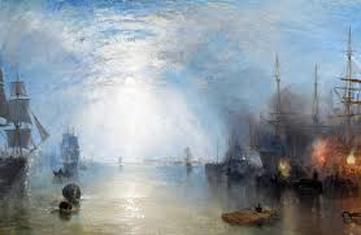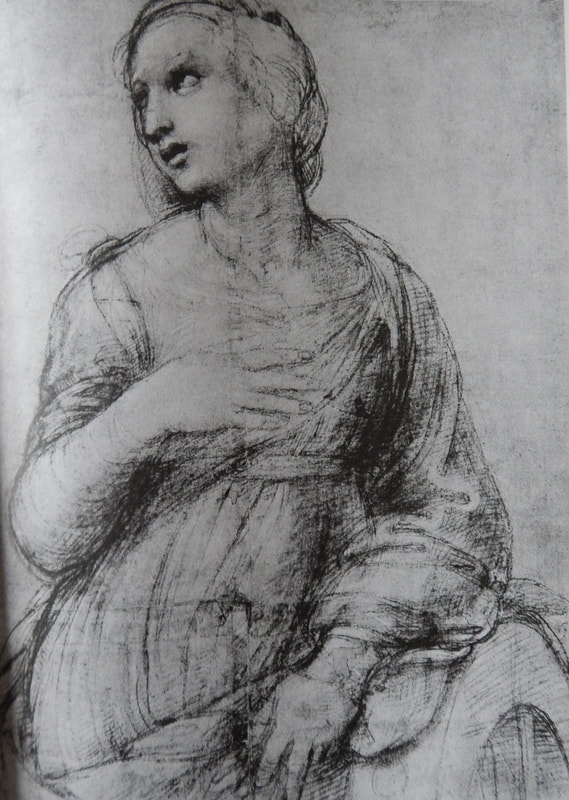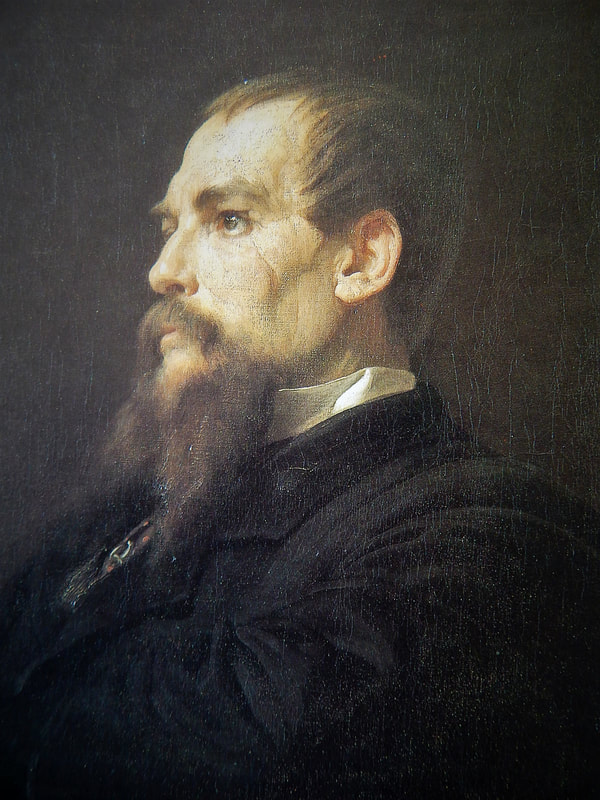|
There is an increased interest among art students in Realism . Most do not know the difference between Classical Realism and Academic Realism . I'm going to discuss these differences in this blog with examples . First of all, what do we mean by Classical Realism? The ancient Greeks lead the way in exhibiting the principles , concepts , proportions and so forth . The Parthenon , constructed in the age of Phidias and Pythagoras , is considered Classical art at its zenith . Not only the architecture , but the figurative sculptures define the essence of Classical Art. The Romans adhered to these same principles in the creation of their own architecture , sculpture and painting . Later, the Renaissance became a period of rebirth of these same Classical qualities. So , what are they? An art with Nature as its inspiration is first and foremost . The human figure , in particular , was considered the highest form of art . The form , the structure , the proportions , the gestures , the treatment and thorough understanding of human anatomy and composition or design were all attributes of the art. The first picture shows the Laocoon Sculpture , the second is The Venus De Milo and the third shows the Caryatid scuptures from a temple near the Parthenon in Greece. These are examples of Greek art at its height. The movement , the emphasis on Form , the canon of Proportions of the figures are all qualities of Classical Realism . Note the graceful contraposto of the pose of Venus. Her right shoulder tips down as the right side of her pelvis is raised . Her head is turned towards the raised shoulder. This is Classic. The anatomy is subtle in its modeling and reveals only the most essential as well as the largest forms . The Laocoon has a violent , sweeping gesture as the ribcage is turned on the pelvis .The feeling of a ' life force' is apparent when studying these figures closely . Let's look at some drawings form the Renaissance ( Classical Realism ) and compare them to 19th century art ( Academic Realism )  Raphael Raphael  Michelangelo late 19th century drawing Jean- Auguste-Dominique Ingres 19th century late 19th century figure drawing Peter Paul Rubens 17th century As we study the drawings of Raphael, Michelangelo and Rubens , all of which exhibit the classical principles of drawing and compare them to the academic realism of the late 19th century , we see some marked differences. The knowledge and understanding of the classical concepts of the large forms , structure , anatomy , technique , action as well as the ' life ' of each piece is in direct contrast to the dull , filled-in drawings of the 19th century which also lack the large forms , knowledge of anatomy and unfortunately , rely on the influence of the photographic image. In other words , the artist with a classical point of view , is inspired by and interprets the model before him or her while the academic realist is influenced by and emulates the photographic image. Let's now take a brief look at some paintings devoted to classical concepts and those which are 19th century academic works. Rembrandt Van Dyke Velasquez Ingres Sir Frederic Leighten Sir Frederic Leighten With this small sampling of paintings we can once again compare the characteristics of the classical approach shown in the work of Rembrandt, Van Dyke and Velasquez with the dull , flat work of 19th century artists represented by the work of Frederic Lord Leighten and Ingres . Note the flatness of the materials and the form of the figure in the work of Ingres as compared to Van Dyke. Rembrandt is famous for his treatment of LIGHT .This was also a quality of the work of Velasquez and all of the artists of the Renaissance , the 17th century and the beginning of the 19th century . ( before the introduction of the photographic image and influence ).
The nude , backview is another example of a flat , filled-in figure ; Dull and uninteresting . The large concepts of SPACE , LIGHT and ATMOSPHERE are present in Classical Painting and Drawing and are lacking in Academic Realism . There are academies and ateliers in Italy , the US and many other places that claim to be practioners of Classical Realism. They are actually perpetuating more of the dull 19th century Academic Realism . There are many talented artists but they don't have the training in the true Classical concepts. In my own classes , I espouse and teach Classical Realism . Look over my various pages of ' critiques ' and workshops . ( group and private ) and videos , e-books and more . I discuss the concepts of Classical Realism in my book , MASTERING OIL PAINTING. This has been only a brief blog regarding this topic but I hope I have provoked some thought. .
7 Comments
Understanding the concept of the LIGHT EFFECT is essential to artists interested in Classical Painting . This is also what's MISSING in most artists' work , whether it's realism , photo realism or academic realism. The concepts of Space , LIGHT and Atmosphere must all come together in a work of art in order for it to resonate with the viewer and hopefully leave them inspired with the beauty and grandeur of Nature . These concepts apply to the portrait, the classical still life , the floral painting and the figure. We will concentrate on the landscape here and discuss the other subjects in future blogs. If you look at the landscapes of Claude Lorrain , J.M.W. Turner , George Inness , Thomas Moran , Albert Bierstadt , Thomas Cole , Edwin Church , Frank Mason ( my instructor ) and all of the Hudson River School of American painters ,you will be captivated by the LIGHT EFFECTS. This means more than just a " focus " or a " spot" of light in the painting's composition . As I mentioned above, it's in combination with the concepts of Space and Atmosphere. This is difficult to explain but more readily understood when the artist faces the landscape and paints en plein air as he/ she relates to the ever-changing light effects of Nature.( I demonstrate and discuss all of this in my workshops ) Leonardo , in his notebooks , even talks about aerial perspective and how to achieve atmospheric effects as objects recede and become cooler and lighter in value. Light moves in and through the landscape . The artist must always keep in mind where the source of light is in the sky. This will dictate where it strikes the ground and where the effects of Light will be greatest . Too many contemporary realists merely copy the values that they see before them . The true artist paints not only what he or she sees , but what they KNOW. I go into depth with this subject ( as well as the classical still life , floral and portrait ) in my book, MASTERING OIL PAINTING . I demonstrate these concepts of Space, LIGHT and Atmosphere in my DVD of 'Landscape Painting on Location ' also .( both available in my shop ) . Sign up for one of my workshops and learn from observing and painting on location!  J M W Turner J m w turnergeorge innessthomas moranfrank masonJames sulkowskijames sulkowskijames sulkowski |
AuthorClassical artist,James Sulkowski , in his art studio in Houston,Pa Archives
January 2022
Categories |
Search by typing & pressing enter





















 RSS Feed
RSS Feed